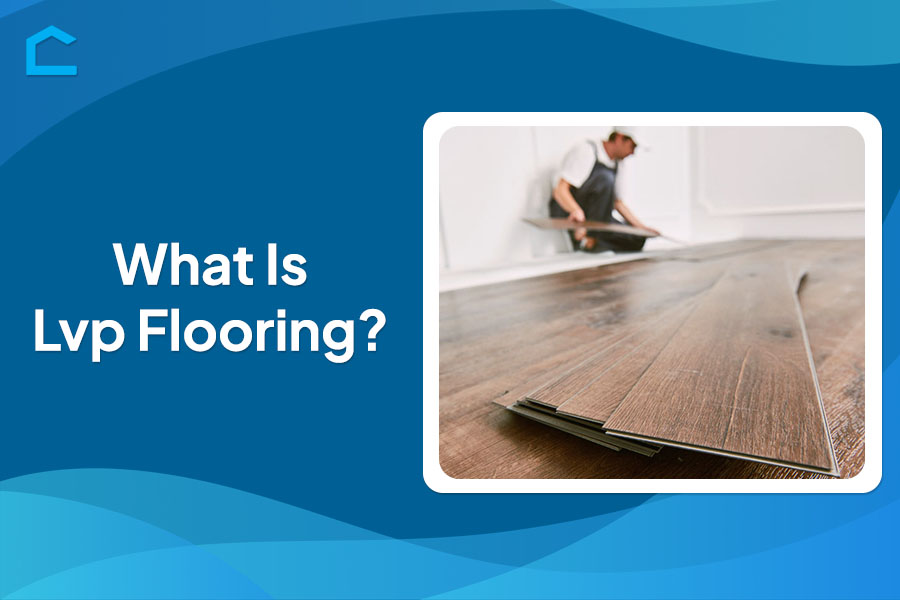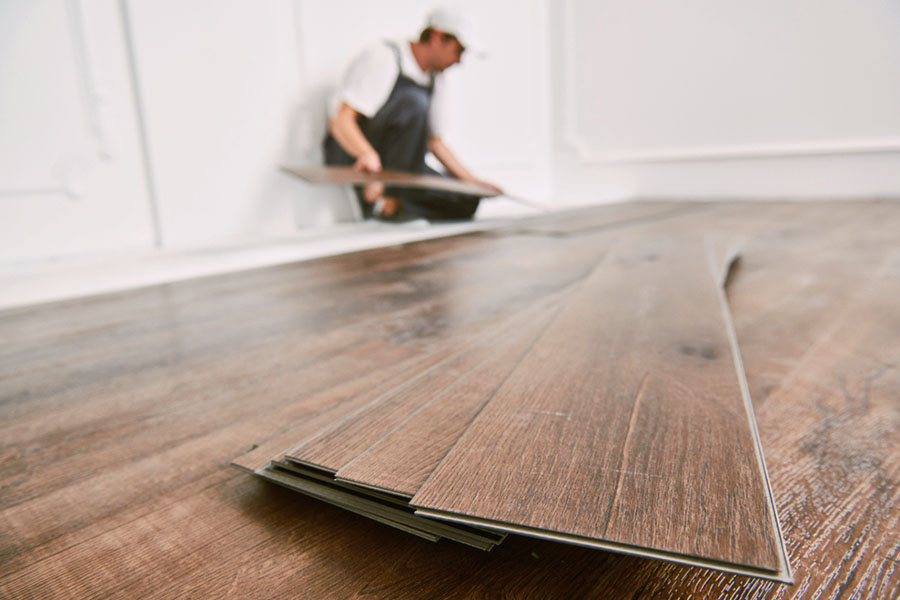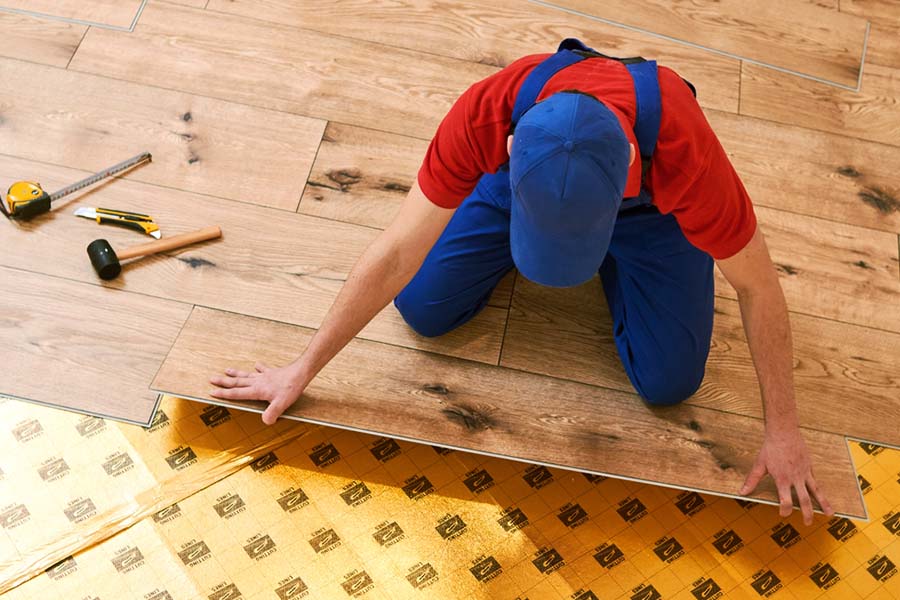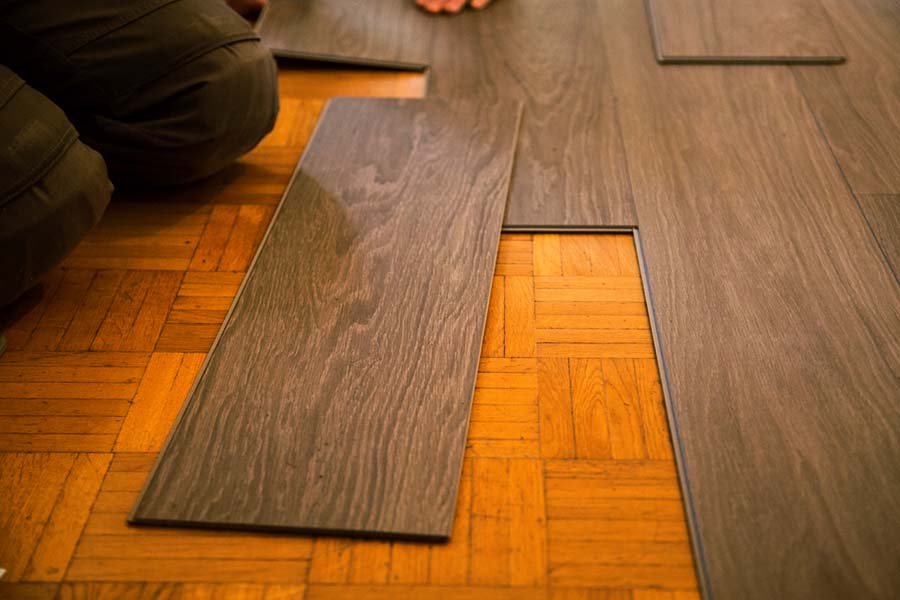What Is LVP Flooring?

Are you on the hunt for a new flooring option that combines style, durability, and practicality? Look no further than the rising star of the flooring world – LVP. This innovative solution has been taking the market by storm, capturing the attention of homeowners and interior designers alike. But what is LVP flooring, more specifically?
This comprehensive article will uncover the intriguing world of LVP flooring. We’ll examine its unique construction, versatile design options, installation process, and maintenance requirements, leaving no stone unturned.
Whether you’re seeking a budget-friendly alternative to hardwood or a low-maintenance option for high-traffic areas, this flooring might just be the perfect fit.
Join us as we embark on an educational exploration of this innovative flooring marvel. Brace yourself for an insightful voyage that will unveil the mysteries of LVP flooring, arming you with the essential knowledge to make the right choice.

Source: shutterstock.com / Photo Contributor: Dmitry Kalinovsky
What Is LVP Flooring?
LVP stands for luxury vinyl plank flooring. It’s a flooring option that mimics the look of hardwood planks but is made from vinyl.
LVP is durable, water-resistant, and often more affordable than hardwood. It comes in a variety of styles and colors, making it a popular choice for homeowners looking for a versatile and low-maintenance flooring option.
LVP flooring is known for its resilience, making it ideal for high-traffic areas. It is water-resistant and can withstand moisture better than traditional hardwood floors.
Also, LVP flooring is available in a wide range of designs and colors, allowing for a customized look that can complement any interior décor style. What is LVP flooring made of? Let’s find out!
Composition of LVP flooring
Materials used
- PVC – polyvinyl chloride (PVC) is the primary material used in LVP flooring. It is a synthetic plastic polymer that provides durability and moisture resistance. PVC also contributes to the planks’ rigidity and dimensional stability, ensuring they maintain their shape and size over time.
- Vinyl – in addition to PVC, vinyl is another essential component of LVP flooring. Vinyl is a versatile synthetic material that can be printed with various colors and textures. This allows for a wide range of design options. Vinyl also contributes to the flooring’s water resistance and ease of maintenance.
- Stabilizers – stabilizers are added to the LVP composition to enhance its performance and longevity. These additives help protect the flooring from UV rays, preventing discoloration and fading. Stabilizers also improve the planks’ resistance to scratches, dents, and other types of damage.
Layers of LVP flooring
Wear layer
The wear layer is the topmost layer of LVP flooring. It is designed to withstand heavy foot traffic and protect the underlying layers from scratches, scuffs, and other wear and tear. This layer is typically made of a clear, durable material like aluminum oxide or ceramic bead coating.
Printed vinyl layer
Underneath the wear layer is the printed vinyl layer, which carries the design and visual appeal of the flooring. This layer is printed with realistic wood or stone patterns, creating a convincing imitation of natural materials.
The printed vinyl layer is responsible for the flooring’s aesthetic appeal and contributes to its overall look and feel.
Core layer
The core layer is the thickest and most substantial layer of LVP flooring. It is typically made of a dense, rigid material like composite wood or stone polymer composite (SPC). This layer provides the flooring with its structural integrity, dimensional stability, and resistance to dents and impacts.
Backing layer
The backing layer is the bottom-most layer of LVP flooring. It is designed to provide cushioning and sound insulation, as well as enhance the overall stability and moisture resistance of the planks. This layer is often made of materials like cork or foam, offering additional comfort and noise reduction.

Source: shutterstock.com / Photo Contributor: Dmitry Kalinovsky
Construction of LVP flooring
Purpose and function of each layer
- Wear layer – protects against scratches and daily wear
- Printed vinyl layer – provides realistic wood or stone visuals
- Core layer – offers structural stability and dent resistance
- Backing layer – provides cushioning, sound insulation, and moisture resistance
Overall performance
The layered design allows LVP to mimic natural materials while ensuring durability, water resistance, and dimensional stability. Each layer serves a distinct purpose, contributing to LVP’s exceptional performance.
Advantages of LVP Flooring
Water resistance
One of the key benefits of LVP flooring is its exceptional water resistance. Thanks to the waterproof core and vinyl construction, LVP is an ideal option for areas prone to moisture, such as bathrooms, kitchens, and basements.
Easy maintenance
LVP flooring is designed to be scratch-resistant and does not require extensive cleaning or polishing. A simple sweep or damp mop is typically sufficient to keep it looking fresh and new, making maintenance a breeze.
Realistic aesthetics
Despite being a synthetic product, LVP boasts a remarkably realistic wood or stone appearance. The printed vinyl layer can mimic the intricate patterns and textures of natural materials, providing a luxurious and authentic look without the high cost and maintenance demands of genuine hardwood or stone.
Versatility in residential and commercial settings
LVP flooring is versatile and suitable for various environments. If residential, it can be installed in high-traffic areas like living rooms, hallways, and entryways, withstanding daily wear and tear. In contrast, commercial is an excellent choice for retail spaces, offices, and healthcare facilities due to its durability and ease of maintenance.
Installation Methods
Glue-down
The glue-down installation method involves adhering the LVP planks directly to the subfloor using a specialized adhesive. This method is recommended for areas with high foot traffic or heavy furniture, as it creates a highly secure and durable bond between the flooring and the subfloor.
The glue-down installation process typically involves preparing the subfloor by ensuring it is clean, level, and free of any debris. The adhesive is then spread evenly across the subfloor, and the LVP planks are carefully laid and pressed into place.
Click-lock
The click-lock installation method is a floating floor system that does not require adhesives. Instead, the LVP planks are designed with interlocking edges that click together, creating a tight and secure fit.
This installation method is relatively easy and can be completed by homeowners or professional installers. It is suitable for areas with moderate foot traffic and provides a certain degree of flexibility, as the flooring can be easily removed or replaced if needed.
The click-lock system often involves laying down an underlayment before installing the LVP planks. The planks are then clicked together, creating a seamless and stable flooring surface.
Loose lay
The loose lay installation method is one of the easiest and most versatile ways to install LVP flooring. It involves simply laying the planks directly on top of an existing flat surface, such as concrete or an existing floor, without the need for adhesives or interlocking systems.
This method is ideal for areas where a temporary or easily removable flooring solution is desired. It also allows for quick installation and easy replacement of individual planks if necessary.
To ensure stability and prevent excessive movement, a specialized underlayment is typically used with the loose lay installation method. The planks are then carefully laid and fitted together, creating a seamless and floating floor surface.
Considerations for Choosing LVP Flooring
Plank thickness
The thickness of LVP planks is an essential factor to consider when selecting the right flooring for your space. Thicker planks generally provide better sound insulation, reducing the impact of footsteps and other noises.
Also, thicker planks tend to be more durable and resistant to dents and impacts. This makes them a suitable choice for high-traffic areas or homes with pets and children.
Wear layer thickness
The wear layer is the topmost layer of LVP flooring, responsible for protecting the underlying layers from scratches, scuffs, and daily wear and tear. A thicker wear layer offers enhanced durability and longevity.
LVP planks with a thicker wear layer can withstand more abuse and maintain their pristine appearance for a longer period, even in high-traffic areas. This makes them a wise investment, especially in commercial or rental properties.
Embossing
Embossing is a process that adds texture and depth to the surface of LVP planks, mimicking the natural grain and knots found in genuine hardwood flooring. Embossed LVP planks have a more realistic and visually appealing appearance.
Embossing not only enhances the aesthetic appeal but also provides a tactile experience, adding to the overall luxury and authenticity of the flooring. However, it’s important to note that embossed planks may require slightly more maintenance to keep the textured surface clean.
Design preferences and needs
When choosing LVP flooring, it’s crucial to consider your design preferences and specific needs. LVP is available in a wide range of colors, patterns, and styles, allowing you to create the desired ambiance for your space.
If you prefer a more traditional look, you may opt for LVP planks that mimic the warmth and richness of hardwood floors. For a more contemporary or minimalist aesthetic, you could choose planks with a sleek, stone-like appearance.
Also, consider factors such as foot traffic, moisture exposure, and the overall functionality of the space. For high-traffic areas or spaces prone to moisture, select LVP planks with a thicker wear layer and water-resistant properties.

Source: shutterstock.com / Photo Contributor: Dagmar Breu
Conclusion
In the realm of modern flooring solutions, LVP (luxury vinyl plank) has emerged as a game-changer, offering a harmonious blend of aesthetic appeal and practical functionality.
This comprehensive guide has explained what is LVP flooring and dived into its intricacies, shedding light on its composition, construction, installation methods, and the factors to consider when making an informed choice.
Boasting a remarkable combination of durability, water resistance, and a lifelike resemblance to natural materials like wood or stone, LVP flooring presents a compelling option for both residential and commercial spaces.
From its easy maintenance and versatility in high-traffic areas to the design considerations of plank thickness, wear layer durability, embossing, and personal style preferences, this article has equipped you with the knowledge to navigate the world of LVP with confidence.
